Carrying out repair work in the house is often associated with the replacement of plumbing communications. And if everything is extremely clear to the master with direct open sections of the room, then the hard-to-reach places for the installation of the highway cause difficulties. To solve them, craftsmen began to use flexible pipes for water supply. Most often they are made from polymers. But there are also stainless steel products.
Application area of flexible water pipes
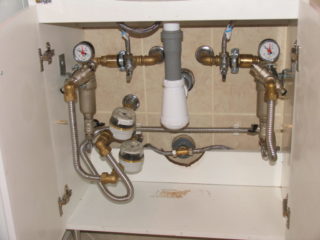
Bending elements are used in the following areas:
- cold and hot water supply systems;
- gas supply;
- ventilation and air conditioning of the premises;
- heating systems (including underfloor heating);
- sewer collectors.
Also flexible pipes can act as a protective casing for different types of cables.
Varieties and specifications
There are several types of flexible water pipes. Each of them is optimal for certain conditions.
Polypropylene
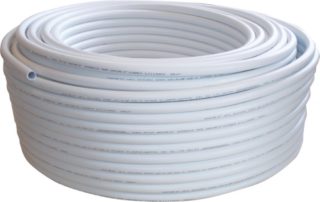
Polymeric flexible pipe for water supply has the following technical characteristics:
- The presence of a heat-insulating coating. This allows the use of polypropylene elements for the installation of hot water supply systems (hot water supply) or lines for heating.
- The maximum temperature load from the inside is +95 degrees.
- The optimum working pressure for a polypropylene system is 10-13 atm.
Additionally, the products are environmentally friendly. Even under the influence of high temperatures, they do not emit toxic substances into the atmosphere.
Pvc
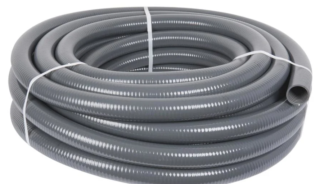
Flexible pipes can be used for both cold water and hot water. Main technical properties of PVC:
- The permissible temperature limit for the transported medium is +90. +100 is allowed for a short time.
- The working pressure inside the polyvinyl chloride network is 6-46 atmospheres.
- No tendency to burn. Only at a temperature of +400 will the pipes melt and only then release toxins. The rest of the material is completely environmentally friendly.
- Product weight depending on length and diameter - from 200 g. up to 2 kg or more.
Thanks to such a mass, a private master can also cope with the installation of a PVC line.
Metal-plastic
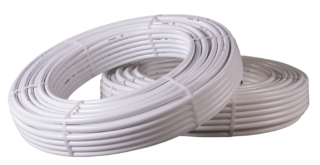
Bending metal-plastic pipes for water are especially common when installing heating systems. Due to the reinforcing foil layer, the elements have low thermal conductivity, resistance to any mechanical stress. Structurally, a flexible tube made of a metal polymer has several layers alternately replacing each other - polymer, aluminum foil, polymer. Each of them is firmly glued.
Additionally, the pipes have the following characteristics:
- Resistance to aggressive environments.
- Stability of the working pressure in the network. It is provided by perfectly smooth inner walls of the elements.
- Possibility of pipe operation at minus temperature indicators.
- Inertness to strong expansion from hot coolant or water.
When installing heating systems, craftsmen prefer to buy German Rehau pipes.
Steel tubes
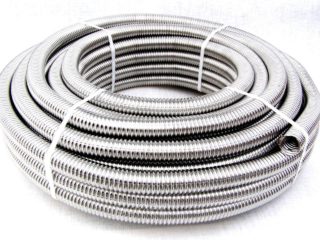
Plumbing elements are made of stainless steel. Therefore, in addition to the high strength of products, they also have inertness to corrosion. Additional technical properties of pipes:
- service life up to 50-70 years;
- resistance to temperature fluctuations;
- no linear stretching, which ensures the preservation of the shape and lumen of the line for the entire period of operation.
Often it is steel pipes that are used to equip gas supply systems in the house.
How to choose flexible pipes
When contacting a specialized store for bendable tubes, you need to rely on the following selection parameters:
- Product material. For the street and cold unheated rooms, metal-plastic, steel, PVC are suitable. If the section of the pipeline will be additionally subjected to mechanical stress, it is better to choose a stainless steel. For interior work, it is desirable to use polypropylene.
- Section of the tube. Should match the diameter of the main piping.
- Material of manufacture of the main line. It is desirable that the flexible pipe and the rest of the plumbing be made of the same polymer or metal. This will exclude uneven linear expansion of the network under the influence of temperature fluctuations.
- Purpose of the highway. It is necessary to pay attention to the permissible temperature indicators for the transported medium for each type of flexible elements.
- Master skills. It is easier to install PVC and polypropylene pipes. Steel and reinforced plastic require more experienced handling.
The budget is not the last criterion when buying plumbing elements. Here the master is guided by his capabilities.
Installation principles for each type
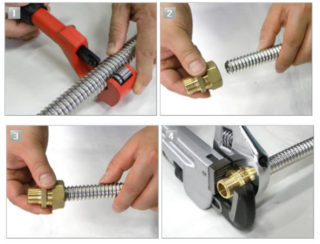
It is necessary to mount pipes of different types in accordance with the material of their manufacture. Docking methods:
- For steel, only special threaded metal fittings are used. You need to seal the connections with special sealants. A thread is preliminarily cut into sections of two pipes for the installation of a flexible element. The connecting fittings are already screwed onto it.
- Polypropylene is joined using a special welding machine (soldering iron) and scissors. If the latter are not in the arsenal of the master, you can use a hacksaw. But then, before welding, the ends of the elements must be carefully cleaned. First, using scissors, the desired length of flexible pipe is cut. Special nozzles of the required diameter are attached to the soldering iron and heat it up. The end of the butted polypropylene pipe and the same fitting are pushed onto a soldering iron for a few seconds and then driven into one another. When cooled, the polymer forms a reliable bond.
- PVC. In this case, craftsmen use special scissors, PVC fittings and glue. The composition of the latter slightly dissolves the upper layer of the polymer, due to which a tight joining occurs. First you need to cut off the desired piece of pipe. Its outer edge and the inner part of the fitting are treated with emery (lightly) and cleaner. Then glue is applied to the prepared elements with a brush around the circumference. It remains to drive the pipe 2/3 of the depth of the fitting into it and turn it slightly clockwise for better distribution of the composition. It is advisable to hold the two elements in this position for 1-1.5 minutes for fixation.
- Reinforced-plastic pipes are connected using crimp fittings. This requires a special tool.
In order not to spend money on the purchase of expensive equipment for the installation of a metal polymer, you can rent it in a specialized store.
Advantages and disadvantages
All flexible pipes have the following positive aspects:
- Ease of installation of any highway in hard-to-reach areas.
- Large bending radius in different directions.
- Service life, equal to the duration of operation for each type of material.
- Resistant to pressure and temperature changes.
- High mechanical strength due to spiral fiber reinforcement.
Of the minuses, one can single out the cost of the material and sometimes the need to buy pipes in coils.








